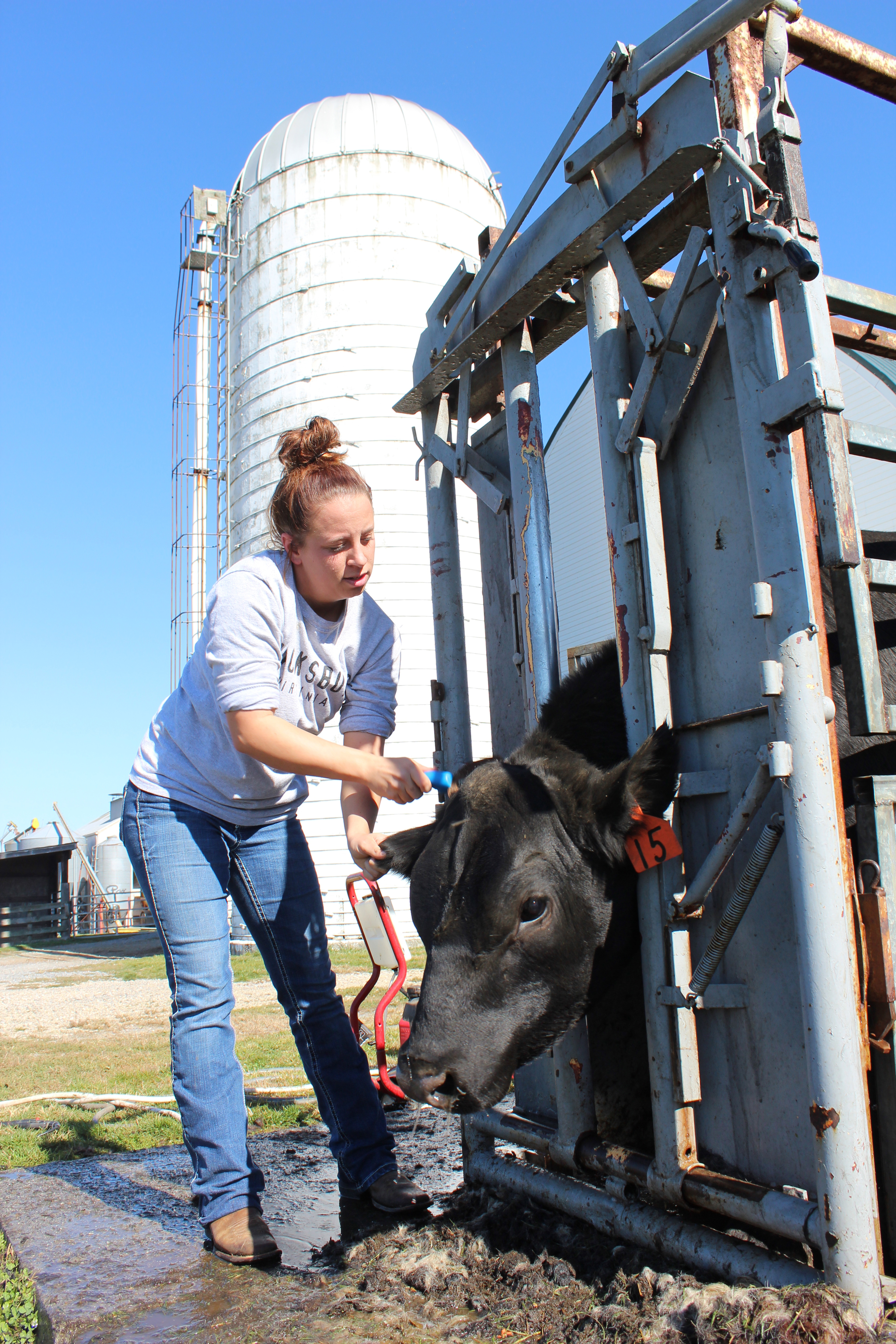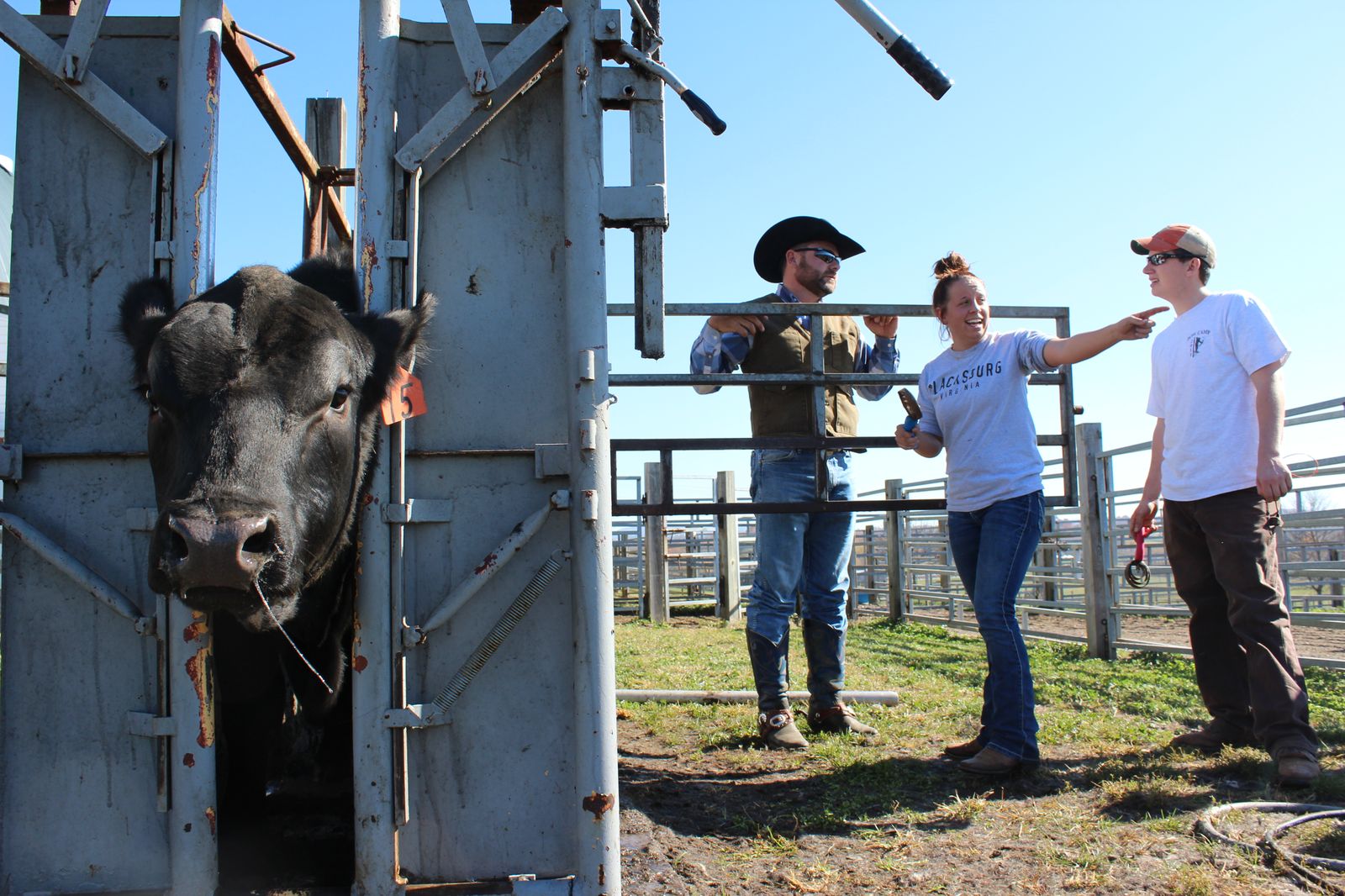Livestock merchandising students gain experience managing Virginia Tech beef cattle sale

The 18th annual Hokie Harvest Sale culminated 10 weeks of work for students who orchestrated the budgets, advertising, and operations of a beef cattle sale that raised $104,450 for animal and poultry sciences programs.
“Students received concentrated experience that would otherwise have taken years to gain,” said Dan Eversole, associate professor of animal and poultry sciences in the College of Agriculture and Life Sciences.
This year’s livestock merchandising class was the largest ever with 95 students, 15 of whom were from colleges other than agriculture and life sciences. Two-year students in Agricultural Technology and four-year students in the Department of Animal and Poultry Sciences made up the majority of the class.
Some students had no experience with livestock, and most had little knowledge of merchandising. The course combined all aspects of livestock merchandising, giving students the opportunity to receive the highest returns on their time and labor. Students quickly learned about supply and demand, and how each affects the bottom line. They also attended a number of lectures given by industry representatives.
From creating and placing sales advertisements to preparing the cattle for sale, the students did it all, which provided them a chance to learn about merchandising firsthand.
“No books, no quizzes, no tests,” Eversole said of his two-credit class. “This is a nontraditional and unique approach.”
Eversole also factors teamwork into the final grade evaluations. His students worked together on committees, such as advertising, clerking, photography, animal display, and food and beverage.
Laura Leigh Venable of Woodlawn, Va., a junior majoring in animal and poultry sciences, learned that even decorating the arena and sale ring is an essential part of preparations.
“You do not want a buyer walking into a cruddy environment,” Venable said. “You want someone to be confident that he is looking at a quality animal.”
From portraying a wholesome image of a farm operation at Virginia Tech to preparing a budget for the sale, students paid attention to every detail. For example, students laid mulch on the floor of the sale ring, elevating the cattle. This gave the viewers a complete picture of what the animals looked like all the way around, according to Logan Martin of Pearisburg, Va., a second-year student in agricultural technology.
“Anything that got overlooked could have spelled disaster,” said Robert Cromwell of Virginia Beach, Va., a junior majoring in animal and poultry sciences.
Preparing the budget for the sale was a worrisome assignment for students because a lack of attention to expenses could have resulted in a loss, Venable said.
“We had to project expenses, gross sales, high lots — which are livestock that sell for the most money — and low lots — which are livestock that sell for the least amount,” said Aaron Heishman of Mount Jackson, Va., a junior majoring in animal poultry sciences and minoring in agricultural and applied economics.
Two animals were often shown together Oct. 26 at the sale ring at the Livestock Judging Pavilion, located on Plantation Road in Blacksburg, Va.
“Double the money, take them both, and sweep the ring,” barked Ken Brubaker, the auctioneer from Brubaker Sales & Marketing.
Some did just that, drawing grins from Kraig Smith of Catlett, Va., and Matt Lawrence of Stanley, Va., agricultural technology students, and Adam Murray of Leesburg, Va., a sophomore majoring in animal and poultry sciences. They quickly alerted the auctioneer of the bids and kept their eyes peeled on the bidders who winked, nodded, smiled, or held up a small sign.
Angus, Simmental, and Hereford breeders bid on a cross section of beef cattle, including a strong offering of cow-calf pairs, bred heifers, and breeding-age bulls. Virginia Tech’s breeding program stresses the importance of genetics and predictable production parameters that are essential for a successful operation. The university-owned cattle are mainly purebreds and are registered with their respective breed associations. This ensures a traceable lineage and helps in predicting performance.
Since its inception in 1995, more than 1,250 students have worked on all facets of the auction. The sales have generated close to $2 million in animal receipt sales. Proceeds from the auction are reinvested in departmental programs with animal and poultry sciences.





